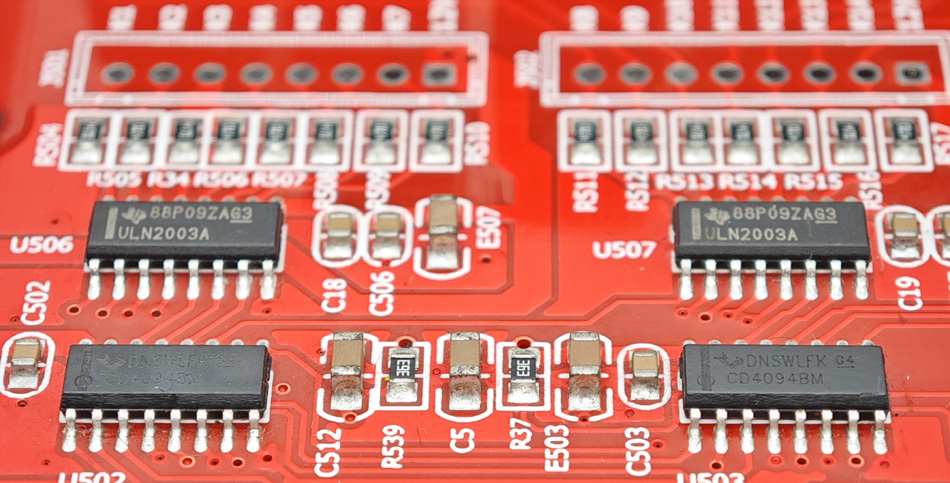- English
- Español
- Português
- русский
- Français
- 日本語
- Deutsch
- tiếng Việt
- Italiano
- Nederlands
- ภาษาไทย
- Polski
- 한국어
- Svenska
- magyar
- Malay
- বাংলা ভাষার
- Dansk
- Suomi
- हिन्दी
- Pilipino
- Türkçe
- Gaeilge
- العربية
- Indonesia
- Norsk
- تمل
- český
- ελληνικά
- український
- Javanese
- فارسی
- தமிழ்
- తెలుగు
- नेपाली
- Burmese
- български
- ລາວ
- Latine
- Қазақша
- Euskal
- Azərbaycan
- Slovenský jazyk
- Македонски
- Lietuvos
- Eesti Keel
- Română
- Slovenski
- मराठी
- Srpski језик
How to reduce waste in PCBA processing
2025-01-03
In the PCBA (Printed Circuit Board Assembly) processing process, reducing waste can not only reduce production costs, but also improve production efficiency and environmental sustainability. Effective waste management measures help optimize production processes, improve product quality and reduce resource consumption. This article will explore strategies for reducing waste in PCBA processing, including optimizing design, improving production efficiency, improving quality control, and effectively managing materials.

Optimize design to reduce waste
1. Considerations during the design stage
Taking steps during the design phase of PCBA processing can significantly reduce waste in subsequent production. Key design strategies include:
Simplified design: Simplifying circuit design and reducing unnecessary components and complex circuits can reduce material costs and production difficulty.
Design for manufacturability: Taking into account the actual conditions of the production process, design PCBs that are easy to manufacture and assemble, thereby reducing problems that may arise during the production process.
Advantages: Simplifying design and improving manufacturability can reduce the use of raw materials and reduce errors in the production process, reducing waste of resources.
2. Design review and simulation
Conduct reviews and simulation tests after the design is completed to identify potential problems and optimize the design. include:
Design review: Organize a design review meeting and invite experts in relevant fields to check the design plan to ensure that it meets production requirements.
Simulation testing: Use simulation tools to perform circuit and thermal analysis to evaluate the performance and reliability of your design.
Advantages: Detect design defects early, reduce modifications and rework in production, and reduce waste.
Improve production efficiency
1. Optimize production process
Optimizing production processes helps improve production efficiency and reduce resource waste. Key measures include:
Standardized operations: Develop and implement standardized operating procedures to ensure the consistency and efficiency of the production process.
Automated production: Introduce automated equipment and robotics technology to reduce errors and waste caused by manual operations.
Advantages: Standardization and automation improve production efficiency, reduce human errors, and reduce material waste.
2. Real-time monitoring and data analysis
Real-time monitoring of production processes and data analysis can help identify and resolve problems in production. include:
Real-time monitoring: Use the production monitoring system to track production data in real time and detect abnormalities in time.
Data analysis: Analyze production data to identify root causes of waste and develop improvement measures.
Advantages: Real-time monitoring and data analysis can quickly respond to production problems, reducing downtime and resource waste.
Improve quality control
1. Strict quality inspection
Strengthening quality control measures can effectively reduce the production of substandard products and reduce waste of materials and time. include:
Process inspection: Conduct staged inspections during the production process to ensure that the quality of each link meets standards.
Final Inspection: Comprehensive inspection of the finished product to ensure it meets technical specifications and customer requirements.
Advantages: Strict quality control reduces the production of defective products, reduces rework and scrap rates, and saves resources.
2. Feedback mechanism
Establish a feedback mechanism to promptly collect and analyze feedback on quality issues to improve the production process. include:
Problem recording: record problems found during the production process and analyze their causes.
Improvement measures: Develop improvement measures based on feedback information to optimize production processes and quality control standards.
Advantages: Improve production processes through feedback mechanisms, reducing future quality issues and resource waste.
Manage materials effectively
1. Material procurement and management
Reasonable material procurement and management can reduce material waste. include:
Precise procurement: Precise procurement according to production needs to avoid material surplus or shortage.
Inventory management: Implement scientific inventory management, regularly check and update inventory to prevent material expiration and damage.
Advantages: Precise procurement and effective inventory management reduce material waste and reduce production costs.
2. Waste recycling and reuse
Implementing waste recycling and reuse measures can reduce waste generation and reduce production costs. include:
Recycling plan: Develop and implement a waste recycling plan to classify and recycle waste generated during the production process.
Reuse measures: Use reusable waste materials in other production links or products to reduce resource waste.
Advantages: Scrap recycling and reuse reduces the cost of processing production scrap and reduces the need for raw materials.
Summarize
Reducing waste in PCBA processing is key to improving production efficiency, reducing costs and improving environmental sustainability. Through strategies such as optimizing design, improving production efficiency, improving quality control, and effectively managing materials, companies can significantly reduce waste in the production process. Implementing these measures will not only help reduce resource consumption, but also improve product quality and production efficiency, achieving the goal of sustainable development.
-
Delivery Service






-
Payment Options









